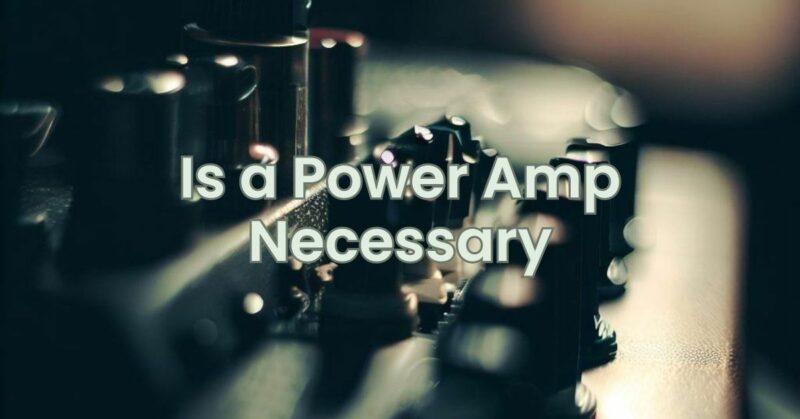When building a high-quality audio system, one important consideration is whether or not a power amplifier (power amp) is necessary. A power amp is designed to amplify the audio signal and provide sufficient power to drive speakers effectively. However, with advancements in technology and the availability of integrated amplifiers and active speakers, the question arises: Is a power amp still necessary? In this article, we will explore the role of a power amp in an audio system and help you determine whether it is essential for your specific setup.
Understanding the Role of a Power Amp:
A power amp serves as the powerhouse of an audio system, taking the preamplified audio signal and amplifying it to a level that can drive speakers with the required power. It enhances the signal strength and ensures accurate reproduction of the music or audio content.
Benefits of a Power Amp:
- Amplification and Power: A power amp provides the necessary amplification to produce sufficient volume levels and dynamic range. It delivers clean and powerful sound, allowing you to experience the full impact of your audio content.
- Speaker Compatibility: Power amps are designed to work with a wide range of speakers, including passive speakers that require external amplification. They can match the impedance and power requirements of different speaker models, ensuring optimal performance and speaker longevity.
- Flexibility and Customization: Power amps offer flexibility in terms of speaker selection. You can choose speakers based on your preferences, room size, and sonic characteristics, knowing that the power amp will drive them effectively.
- Upgradability: With a separate power amp, you have the option to upgrade or replace individual components in your audio system. This allows you to enhance your system’s performance over time and adapt to changing audio needs.
When Might a Power Amp Not Be Necessary?
While a power amp is beneficial for many audio systems, there are scenarios where it may not be necessary:
- Integrated Amplifiers: Integrated amplifiers combine both preamplification and power amplification functions in a single unit. If you have an integrated amplifier, you may not need a separate power amp, as the integrated amplifier can provide sufficient power to drive your speakers effectively.
- Active Speakers: Active speakers, also known as powered speakers, have built-in amplifiers. These speakers are designed to receive line-level audio signals directly from a source, eliminating the need for a separate power amp. If you have active speakers, a power amp is not necessary unless you want to expand your audio system or drive additional passive speakers.
- Low-Power Systems: If you have a small-scale audio setup, such as a desktop system or a personal listening setup, the built-in amplification from a source device or compact amplifier may be sufficient to drive the speakers adequately. In such cases, a separate power amp may not be necessary.
Conclusion:
Whether a power amp is necessary for your audio system depends on several factors, including your specific setup, speaker requirements, and audio preferences. A power amp offers benefits such as enhanced amplification, power delivery, speaker compatibility, flexibility, and upgradability. However, if you have an integrated amplifier or active speakers, or if you have a low-power audio system, a separate power amp may not be necessary. Consider your audio needs, budget, and future expansion plans to make an informed decision about incorporating a power amp into your audio setup.


